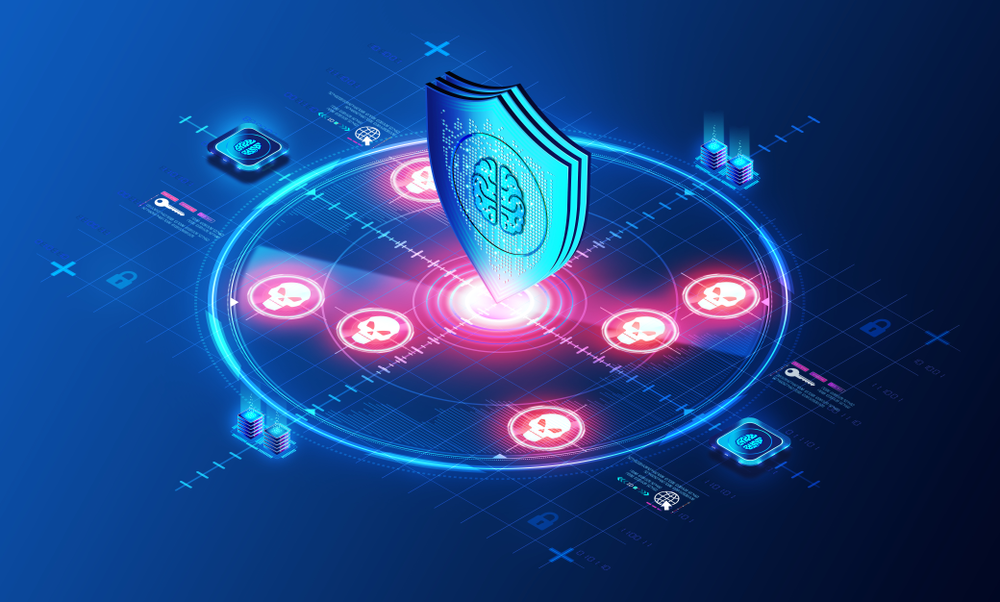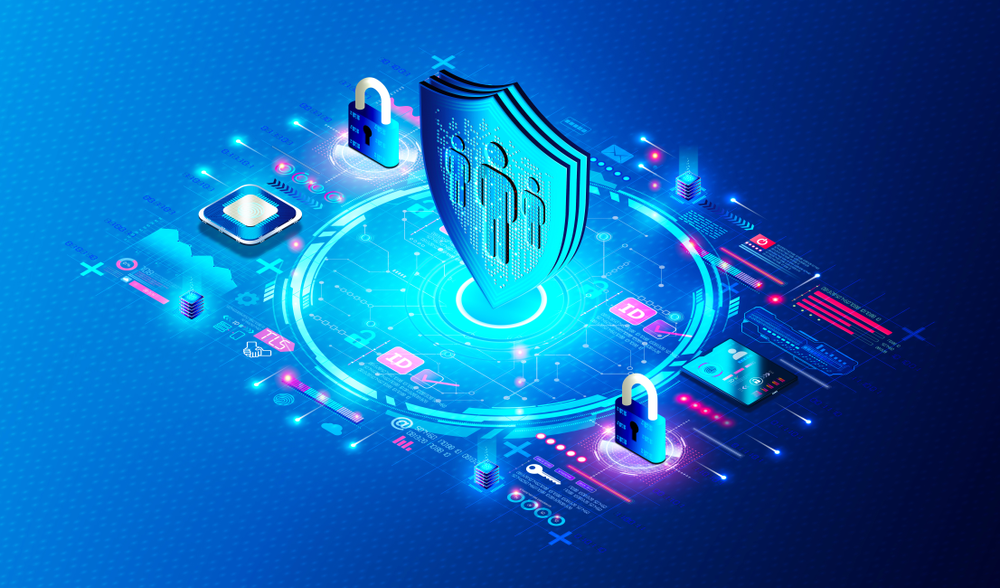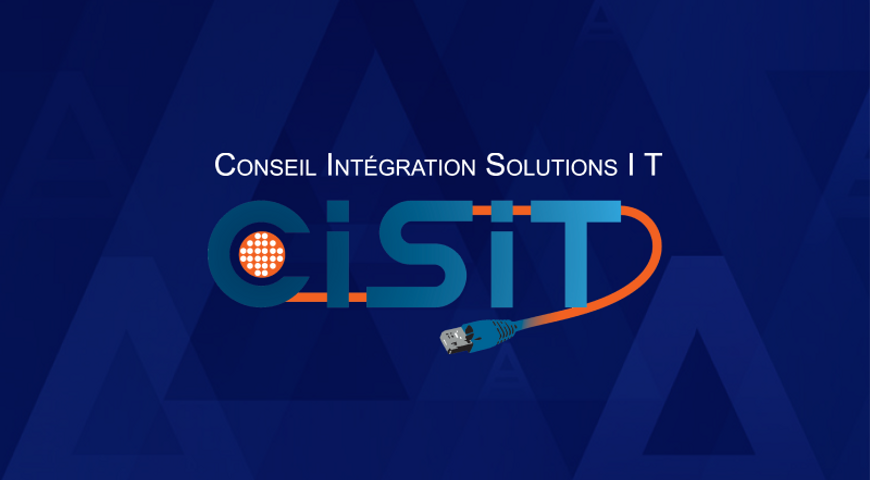
What is EDR?
EDR security solutions detect suspicious system behavior on hosts and endpoints by collecting endpoint data and analyzing individual events. It then investigates the root cause of malicious behavior to alert your security team and help them remediate threats before malicious files affect your environment, making them a real lifesaver in unexpected scenarios.
How Endpoint Detection and Response (EDR) Works?
Advanced Persistent Threats (APTs) allow threat actors to slip through defenses undetected. EDR solutions protect against known and unknown attack tactics, techniques, and procedures, which are often leveraged by initial access brokers, such as file-less malware, malicious scripts, infected attachments, stolen user credentials, etc.
An EDR solution monitors all ongoing activities at the endpoints and provides robust real-time threat intelligence and visibility. It enables advanced threat detection, investigation, and response capabilities with incident data search, alert triage, suspicious activity detection and containment, and threat hunting. With all these tools and approaches, EDR accomplishes the primary purpose of providing robust security protection to stop every potential cyberthreat.
EDR security solutions specialize in several primary functions. Let's explore them below.
Automated cyberthreats detection
- EDR implements comprehensive visibility at all endpoints to detect various indicators of attack (IOA) and analyzes billions of real-time events to identify suspicious activity towards the protected network automatically.
- Robust EDR security solutions strive to understand a single event as a part of a more significant sequence to apply security logic. If an event sequence points to a known IOA, the EDR solution will identify it as malicious and automatically issue a detection alert.

Threat intelligence integration
Integrated solutions combine threat and network monitoring with threat intelligence to detect malicious behavior more quickly. If the EDR tool detects suspicious tactics, techniques, and procedures (TTPs), it will provide comprehensive details on the potential security incident before data breaches occur. This includes possible attackers, the most vulnerable attack surface, means of malware deployment, investigating past breaches and other already-known information about the attack.
Real-time continuous monitoring and historical visibility
EDR uses active endpoint data aggregation and it's primary function is to catch sneaky security incidents. Users of EDR are provided with comprehensive visibility into all activities on the company endpoints from a cybersecurity perspective. A dedicated solution tracks a myriad of security-related events, including process creation, registry modifications, driver loading, memory and disk usage, central database access, endpoint activity, network connections, and more.
EDR solutions present security teams with crucial information to ensure endpoint security:
- Host connectivity data collection - local and external addresses.
- Direct and remote user account access data.
- ASP key changes, executables, and admin tool usage.
- Detailed process-level network activity - DNS requests, open ports, and connections.
- Process executions.
- Removable media usage.
- Archiving summary in RAR and ZIP.
Collecting various types of data enables security teams to observe an attacker's behavior and react to it in real-time - which commands they're trying to run, what techniques they're using, where they are trying to breach, etc.

Swift threat investigation
EDR systems can investigate threats quickly and accelerate remediation. You can think of them as a security analyst, gathering data from each endpoint event and storing it in a massive, centralized threat database that provides comprehensive details and context to enable rapid investigations for both real-time and historical data.
What are the core components of EDR?
- Threat detection.
- Response system with multiple options.
- Data analysis.
- Alerting.
- Remote workforce protection.
- Forensics and Investigation Tools.
- Other Features: Additional features include feeds, forensic insights, event correlation, MITRE ATT&CK®, and tools for vulnerability management.
What is the difference between EDR and traditional security measures?
Understanding the differences between endpoint detection and response (EDR) and traditional security measures is very important for strengthening an organization's network defenses and creating a robust endpoint protection strategy against the countless cyber threats that we may face on a daily basis.
Traditional endpoint security solutions are without doubt fundamental, but they often operate on a reactive model. They typically involve antivirus software and firewalls designed to prevent known threats from infiltrating critical systems that store our most valuable asset, our data. However, these solutions may falter when faced with more sophisticated and evolving threats.
This is where EDR stands out as the best weapon against these mean and harmful threats. Unlike traditional security measures that primarily focus on prevention, EDR emphasizes detection and response, minimizing the time gap in order to prevent these process based attacks as soon as possible. EDR products and solutions continuously monitor endpoint activities and real-time data, analyzing vast amounts of data to detect and investigate suspicious activities and behaviors and identify threats following their signature based methods for attack. This real-time monitoring allows for the extended detection and identification of threats that might slip through the cracks in traditional defenses.
Endpoint threat detection is a core feature of EDR. It goes beyond signature-based detection, which relies on known threat patterns of malware. Instead, EDR employs advanced techniques like behavioral analysis and threat intelligence to identify evolving and harmful threats and help prevent attacks on time.
We live in an era where cyberthreats are becoming increasingly sophisticated and elusive. According to recent research by MT University[SR1] , the number of cyberattacks has quadrupled in the last five years. Nowadays, these attacks need less time to penetrate and cause catastrophic damage to your systems compared to the traditional malicious actors from the past decade.
Moreover, EDR operates on the assumption that security breaches are inevitable and that we will all face some of these threats at some point in our lives. While traditional security solutions primarily focus on preventing data breaches, EDR acknowledges a determined adversary might find a way in despite all preventive measures. EDR places a strong emphasis on minimizing the dwell time of threats within a system by swiftly detecting and responding to incidents.
The differences between EDR security and traditional security solutions are enormous. Traditional security solutions are just becoming insufficient in the battle against evolving and harmful cyberthreats. On the other hand, EDR, emphasizing real-time monitoring and advanced threat detection, aligns more closely with the contemporary needs of organizations seeking robust cybersecurity. We can say that EDR, with all these security tools, takes cyber protection to a whole new level, providing peace of mind in every unexpected scenario.
What are the best practices for implementing EDR?
In the past twenty years, the web has expanded and become a part of every person's life, but with this expansion of the internet and all the comforts that we are provided with comes the dark side of the internet. Nowadays, cybercriminals are very mean and cunning, and the threats are becoming more sophisticated and dangerous daily. Here, the implementation of endpoint detection and response (EDR) has become a critical component in protecting our digital and mobile devices, networks, computers, and sensitive information. Beyond just deploying sophisticated tools, effective EDR implementation includes a strategic combination of technology, human expertise, and proactive measures. With the combination of these aspects, success is guaranteed.
Understanding how EDR works beyond traditional security measures is foundational to its successful deployment in your cybersecurity. EDR isn't just another layer of protection; it's a dynamic system designed to detect threats and respond swiftly to potential attacks that may harm your systems. Recognizing its role in the broader cybersecurity framework is essential. EDR solutions quickly detect suspicious, malicious activity then respond to and solve the problem much faster than traditional security measures.
The key to the success of EDR is the role of security analysts. These tools analyze the system for suspicious behavior and activities, interpret alerts generated by EDR tools, and investigate potential threats.
Another crucial benefit of EDR is the integration of threat intelligence services. EDR tools operate effectively when fed with accurate and timely data for current and new threat patterns. Threat intelligence provides the necessary context, enabling security teams to understand the nature of threats and the tactics employed. Regular updates from credible threat intelligence data sources enhance the decision-making capacity of EDR tools and make them more effective against new attacks and their approaches.
An effective response to these threats is fundamental to EDR implementation. Detection is only the first step, but what follows afterwards is crucial. Establishing clear and well-documented response procedures ensures a swift and coordinated reaction to identified threats, minimizing potential damage due to the minimized time gap between these processes.
Many organizations are strengthening their security strategies even more by using Managed Detection and Response (MDR) services, which extend the capabilities of EDR. MDR services provide a variety of tools that continuously monitor, detect, and respond to security incidents.
Integration with broader security infrastructure is crucial for cybersecurity effectiveness. EDR tools and software agents should seamlessly interface with security information and event management (SIEM) systems, firewalls, and other security layers, creating a robust and interconnected security ecosystem.
Another key measure is regular employee training and simulation exercises that train a proactive security stance. These exercises help employees recognize malicious threats and respond to them. As cyberthreats evolve, so should the skills of security teams and employees. Routine training sessions and simulated cyberattack scenarios ensure the team is well-prepared to respond effectively when real threats occur.
Continuous improvement serves is a guiding principle in maintaining the business continuity and healthy operation of your systems and networks. Cybersecurity is a dynamic field, and regularly reassessing the efficacy of EDR tools and the overall security strategy ensures that an organization remains one step ahead of the malicious threats that are hunting system vulnerabilities to slip through and infect your devices and networks.
EDR isn't just about deploying cutting-edge tools; it's about cultivating a resilient security culture, empowering top-notch techniques and approaches, and adopting a proactive stance that anticipates and mitigates threats effectively.
Why you need an Endpoint Detection and Response (EDR) security solution?
Nowadays, the number of threats that can cause damage to our systems, devices, and networks is countless and constantly growing. As technologies evolve and get quicker and more powerful, so do the threats. Cybercriminals are working on new and more destructive emerging attacks. Their main goal is to get access to sensitive information by malicious software in order to gain profit from the stolen information or just cause chaos to your networks when they receive unauthorized access.
From that perspective, we want to be as prepared as possible for such an unexpected scenario. Fortunately, EDR solutions are precisely what we all need. The functions and techniques of EDR provide us with the best detection and response tools to deal with these mean and destructive threats.
EDR is a technology that mitigates destructive damage by leveraging rapid detection and automated response capabilities. These features are significantly faster than traditional endpoint security solutions, greatly reducing the likelihood of cyberattack damage. If you want to protect your business and prevent catastrophic scenarios, implement an EDR solution into your cybersecurity.
What to look for in an EDR solution?
Cyber threats evolve by the minute. In response, endpoint detection and remediation aim to keep up with many advanced cybersecurity features. Knowing the key aspects of EDR security is critical to choosing the most suitable solution for your business.
Below are six primary aspects of an EDR solution to help you ensure the highest level of protection while investing the least effort and money.
Endpoint visibility
- Many security teams find monitoring all on-premises and personal devices in hybrid work environments challenging. A robust solution will ease the process and do most of the work for them.
Threat detection database
- Efficient EDR relies on massive data volumes collected from endpoints to add context and mine the results for signs of potential threats.
Behavioral analysis and protection
- Signature-based analysis and indicators of compromise (IOCs) aren't enough to mitigate modern threats. Effective EDR security requires behavioral approaches to identify indicators of attack (IOAs), so your security team can act on the threat before it becomes a data breach.
Threat intelligence and insights
- Threat intelligence provides much-needed context for EDR, including attributed adversary details and more complex information about ongoing attacks.
Rapid response
- A swift and accurate response to incidents can counter an attack before it becomes a data breach and allow your company to resume business processes as quickly as possible.
Cloud-based options
- Cloud-based EDR ensures zero impact on endpoints while enabling accurate search, detection, analysis, and threat investigation in real-time.
- From SMBs to enterprises, all organizations need advanced cybersecurity controls to combat modern cyber threats. Unfortunately, most EDR solutions capable of countering advanced threats are highly complex and costly to operate.
- With Acronis Advanced Security + EDR, you can rapidly search, detect and remediate sophisticated attacks while dramatically reducing workforce effort, mean time to remediate (MTTR), and costs via a single, integrated platform built for MSPs.
Examples of endpoint devices protected by EDR
EDR tools are technology platforms that help security teams detect malicious activity, investigate potential threats quickly, and take the necessary actions to stop attacks on various devices at their early stage. These devices can include employee workstations, laptops, servers, cloud systems, mobile phones, or IoT gadgets.
Typically, EDR solutions gather information from devices like process executions, communication patterns, and user logins. They analyze this data to identify any malicious activities or any types of anomalies. Moreover, they keep records of activities to assist security teams in handling incidents. Furthermore, these solutions offer both manual responses to deal with threats on the device, like isolating it from the network or performing a wipe and reimage procedure.
How to integrate EDR into your security infrastructure?
Let's discuss, step by step, how to integrate EDR into your current security infrastructure. We will explain it step by step if you need to take notes, because it is priceless information.
Step 1: Assess your current endpoint security status.
The first step is to access your current endpoint security status and identify any gaps, risks, or vulnerabilities in the infrastructure. You can use different tools and approaches to perform this assessment, such as vulnerability scanners, penetration testing, and audits. Also review your existing endpoint security policies and procedures to see if they are aligned with your business goals, best practices, and one of the most important things: regulatory requirements.
Step 2: Choose the proper and effective endpoint security solution.
The next step is to choose the right and effective endpoint security solution for your IT infrastructure. There are different options on the market, each with different features, capabilities, costs, and approaches. Consider factors such as the size and complexity of your endpoints, the level of protection needed, the integration and compatibility with other IT security tools if you are using them, and the ease of deployment and management. Some of the traditional endpoint security solutions include antivirus, anti-malware, firewalls, encryption, and device management.
Step 3: Implement the EDR security solution.
The third step is implementing the endpoint security solution according to your plan and budget. Adhere to the recommended practices and guidelines the vendor or service provider gives. Take the steps to configure, test and update the solution properly. It's also crucial to provide training to your IT staff and end users on how to utilize the solution effectively. Additionally, monitor the solution’s performance and impact on your IT infrastructure and business operations.
Step 4: Integrate the EDR solution with other IT security tools.
The fourth step is to implement the endpoint security solution with other IT security tools that you currently use or plan to use. This helps to achieve a seamless security framework that covers all aspects of your IT infrastructure, such as network, cloud, data, and identity. For example, you can integrate your endpoint security solution with your security information and event management (SIEM) system, which collects and analyzes data from various sources to detect and respond to security incidents promptly.
Step 5: Align the EDR solution with your IT security policies.
The next step involves aligning the endpoint security solution with your IT security policies, which outline the guidelines and expectations for your IT security professionals. It's important to review and revise these policies to incorporate the enhancements and modifications introduced by the EDR security solution. Furthermore, it is crucial to communicate and enforce these policies among your IT team and end users, ensuring their compliance. Additionally, regular reviews and updates of your IT security policies are necessary to stay current with the changing threat landscape and business requirements.
Step 6: Evaluate and improve the endpoint security solution.
The final step is to evaluate and improve the endpoint security solution continuously. Collect and analyze feedback and data from various sources, such as reports, logs, alerts, surveys, and audits, to measure the effectiveness and efficiency of the endpoint security solution. You should also identify and address any issues, challenges, or opportunities for improvement. Furthermore, you should keep track of the latest trends and developments in endpoint security and adopt new technologies and practices that can enhance your security.
Incident response (IR) in EDR solutions
- Responding quickly to an incident is critical to an organization's cybersecurity strategy. An IR plan describes how the company will handle a data breach or a cyber attack, including all mitigation efforts to limit recovery time, reduce costs, and protect the brand's reputation.
- Businesses should design, test, and implement a comprehensive IR plan. The plan should define what types of incidents can affect the company network and provide a list of clear processes to follow when an incident occurs.
- Moreover, the plan should specify a responsible security team, employees, or executives to manage the overall IR process and oversee that every action in the plan is executed appropriately.
The role cybersecurity insurance plays in Endpoint Detection and Response
Cybersecurity insurance is a crucial safety net, specifically concerning EDR. This insurance provides a financial cushion against potential damages caused by cyber incidents. EDR acts as a defensive wall, protecting endpoints against malicious activities, but breaches can still occur.
Cybersecurity insurance stops the fallout, covering the expenses of investigation, remediation and potential legal ramifications. It essentially adds a layer of resilience to the security infrastructure, acknowledging that, unfortunately, no defense is impervious despite our best efforts. As organizations invest in robust EDR solutions to protect their digital networks and assets, the synergy with cybersecurity insurance becomes a holistic approach to risk management, ensuring a comprehensive strategy to recover from a cyber storm.
What is the difference between EDR and EPP?
While EDR's main capabilities comprise threat detection, IR, incident investigation, and security incident containment, endpoint protection platforms (EPP) aim to mitigate traditional (malware) and advanced threats (such as ransomware, file-less attacks, and zero-day vulnerabilities) via passive endpoint protection.
Some EPP solutions include EDR capabilities. However, primarily, EPPs rely on the following to counter threats:
- Signature matching: Detecting threats via known malware signatures.
- Behavioral analysis: Determining and identifying behavioral anomalies even when no threat signature is found.
- Sandboxing: Executing files in a virtual environment to test them for suspicious behavior.
- Allow/deny listing: Blocking specific IP addresses, URLs, and apps.
- Static analysis: Binary analysis via machine learning algorithms to search for malicious characteristics before execution.
EPP's key components safeguard endpoints via the following:
- Antivirus and next-gen antivirus (NGAV).
- Data encryption, packed with data loss prevention (DLP) capabilities.
- Personal firewall endpoint protection (network-based defenses).
What is the difference between antivirus and EDR?
Traditional antivirus capabilities are simpler and more limited than a modern EDR solution. EDR plays a much more significant role in enterprise cybersecurity.
Antivirus software typically consists of a single program that scans, detects and removes known viruses and basic malware types. EDR, on the other hand, can detect unknown threats based on gathered data and comprehensive analysis.
As EDR provides monitoring tools, dynamic endpoint security, whitelisting tools and more, it adds multiple defense layers to counter malicious actors.
The future of Endpoint Detection and Response: Trends and predictions
The future of endpoint detection and response looks promising, with wider adoption of endpoint agents in SMBs, the emergence of autonomous response capabilities, a greater emphasis on privacy and data protection, and the evolution of threat hunting on the horizon. As we enter 2024, these trends will reshape the cybersecurity landscape, offering businesses more robust and effective ways to protect themselves against cyber threats.
New trends for improving EDR are just around the corner.
Better integration with other security tools: One expected trend is the increasing integration of EDR with other security tools. As cyberthreats become more harmful, organizations need a unified, multi-layered approach to security to beat these advanced threats. Businesses achieve a more effective and secure view of their security posture by integrating EDR with SIEM systems, network traffic analysis (NTA) solutions, and vulnerability management platforms. This enhances threat detection capabilities and streamlines the response process.
AI will take EDR solutions to a whole new level. AI can analyze large amounts of endpoint data more quickly and accurately than humans, identifying patterns and anomalies that might indicate a cyberthreat. By leveraging these technologies, EDR solutions provide a more proactive and predictive threat detection approach, helping organizations stay one step ahead of cyber attackers.
Enhanced focus on insider threats: In 2024, user authentication alongside PBA will advance. The focus will be on strengthening identity verification. Multi-factor authentication (MFA) is set to become more advanced by incorporating authentication and behavioral analysis. These improvements aim to protect endpoints, enhance the security of access environments, and reduce the risks of compromised end-user credentials.
Advances in EDR: In 2024, EDR will improve significantly and offer more comprehensive threat visibility and response capabilities. These solutions will integrate seamlessly with other security tools, fostering a holistic approach to cybersecurity. By enhancing threat detection and response capabilities, organizations can better protect their endpoints against constantly evaluating cyberthreats.
How an EDR security solution is a game-changer in cybersecurity?
Unlike traditional security measures that rely on static, signature-based approaches, EDR is dynamic and adaptive, making it a game-changer. It operates on the understanding that cyberthreats are persistent and continually evolving. EDR goes beyond just preventing known threats. It excels at detecting and mitigating unknown and sophisticated attacks.
One of the key aspects that makes EDR priceless is its real-time monitoring and response capabilities. Nowadays, as threats multiply daily, EDR acts as a lifesaving option, providing continuous surveillance of endpoints. This proactive stance enables rapid identification and containment of potential security incidents.
Moreover, EDR is a game-changer because of its focus on behavioral analysis. EDR actively seeks out any suspicious activities. Analyzing endpoint data and user behavior can identify indicators of compromise that might go unnoticed by traditional security measures and slip through. This bolsters an organization's security posture and enables proactive measures against emerging threats.
Additionally, EDR's role in automated threat response constantly improves and changes. It doesn't rely solely on manual intervention but can autonomously respond to specific threats based on predefined policies. This accelerates incident response times and ensures consistency and precision in mitigating threats.
Why Acronis offers the best EDR Solution compared to others?
We acknowledged the importance of being equipped with robust security software to keep our information protected from the countless advanced threats that constantly seek to access our system through vulnerabilities in our security system.
Acronis Advanced Security + EDR provides complete protection against all kinds of cyberattacks, even those still unknown. How will this happen? Our solution equips you with the best endpoint protection strategy in the battle against daily sophisticated threats. While most vendors providing EDR solution security offer a robust EDR service, Acronis gives the best cyber protection for your PC and mobile devices.
Our solution combines robust antivirus software, an advanced EDR solution, and backup and recovery capabilities. This means that you will receive robust security protection that will take care of all the known threats and protect you from all unknown malware attacks with our advanced EDR solution. Thus, you receive complete protection and ensure the safety of your devices and all data stored on them. With top-notch techniques and approaches, all malicious threats will be stopped before penetrating your systems.
You provide your organization and users with robust protection 24/7. Furthermore, your precious data is stored in the cloud, which allows you to recover it quickly and whenever needed. These benefits provide the most complete security, so you know that no matter what happens, your data will be protected in the best way possible.
Our customer support is another huge benefit, knowing that you have 24/7 assistance in an emergency. You will also save money because these services are billed in one subscription. If you had to subscribe to antivirus software, EDR services, cloud storage, backup and recovery, the expenses at the month’s end would be much more than choosing Acronis. We have been the industry leader for years, with countless awards, and there is a reason for that: we exceed our customer’s expectations. By choosing Acronis, you position yourself one step ahead of threat actors.
About Acronis
A Swiss company founded in Singapore in 2003, Acronis has 15 offices worldwide and employees in 50+ countries. Acronis Cyber Protect Cloud is available in 26 languages in 150 countries and is used by over 21,000 service providers to protect over 750,000 businesses.



